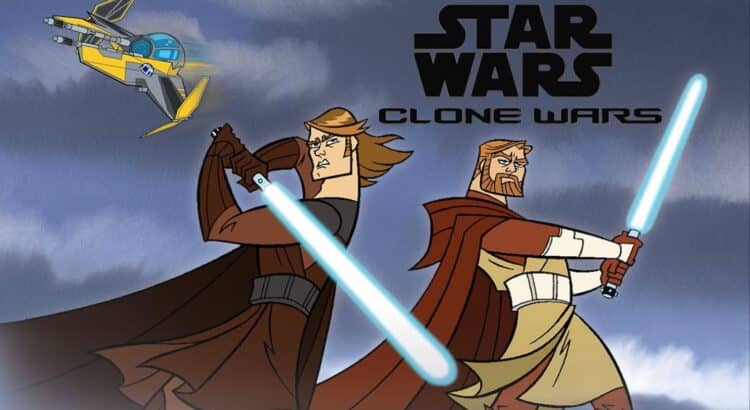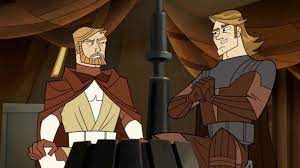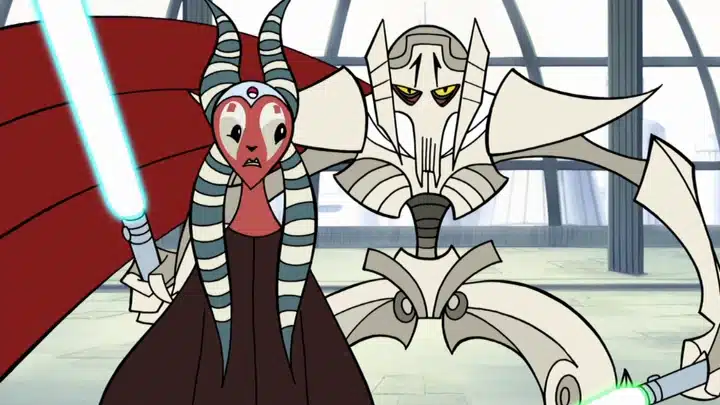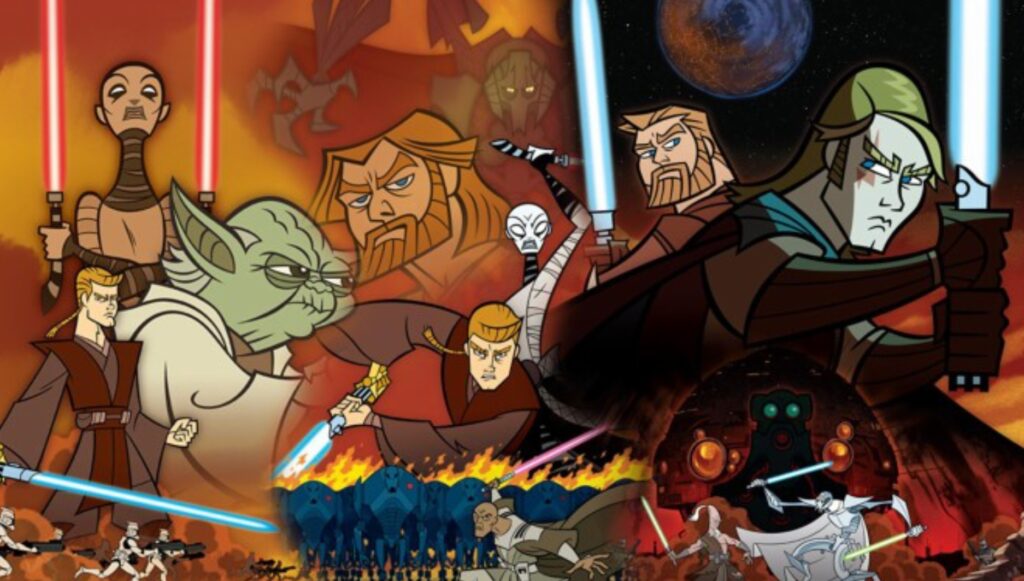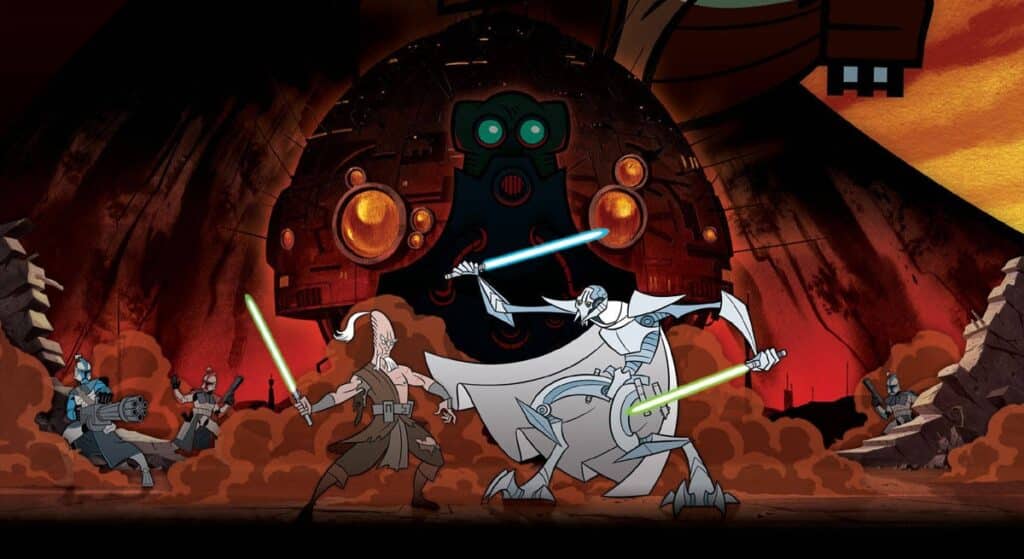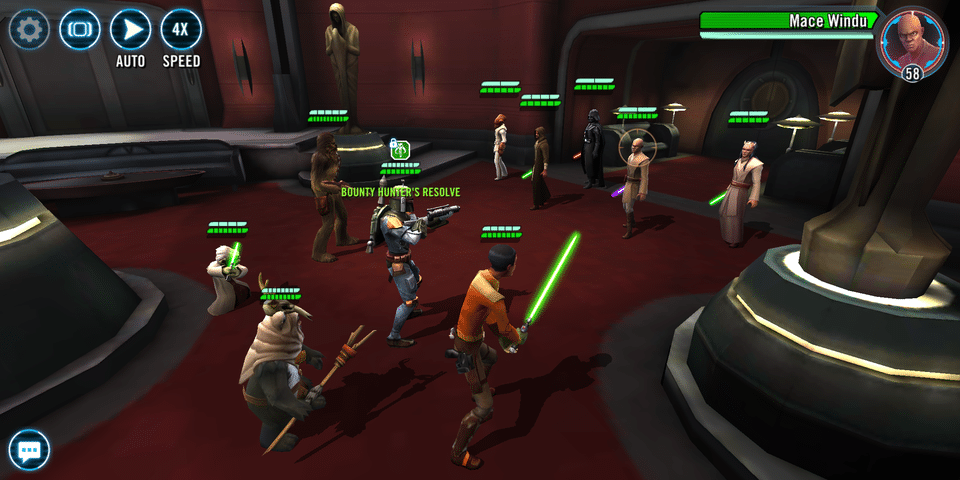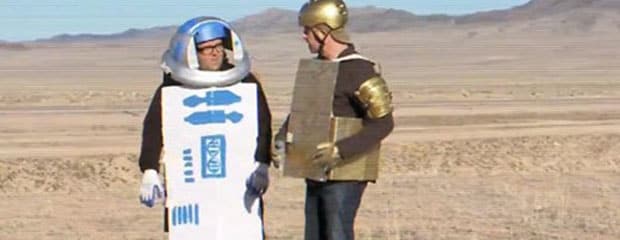In the pantheon of Star Wars media, few entries have been as distinctive and influential as Genndy Tartakovsky’s “Star Wars: Clone Wars.” Debuting 20 years ago, this animated series not only bridged the narrative gap between “Attack of the Clones” and “Revenge of the Sith,” but it also introduced a new, artistic vision to the galaxy far, far away. As we celebrate its 20th anniversary, let’s embark on an exploration of the series’ impact, legacy, and enduring appeal.
The Vision of Genndy Tartakovsky
Genndy Tartakovsky, a visionary in the world of animation known for his work on “Samurai Jack” and “Dexter’s Laboratory,” brought a distinct style and sensibility to the Star Wars universe. His approach to “Clone Wars” was groundbreaking, characterized by dynamic action sequences, minimalistic yet expressive dialogue, and a unique animation style that combined traditional and digital techniques. This section delves into Tartakovsky’s creative process, exploring how his artistic decisions shaped the series’ look and feel, setting it apart from other entries in the Star Wars canon.
Bridging the Saga’s Chapters
Star Wars: Clone Wars” was more than just a stopgap between the prequel trilogy films; it was a narrative vessel that enriched the lore of the Star Wars universe. The series delved into the Clone Wars conflict with greater depth, exploring the stories of key characters like Anakin Skywalker and Obi-Wan Kenobi, and introducing now-beloved characters such as Asajj Ventress and General Grievous. This part of the article examines the narrative significance of “Clone Wars,” discussing how it expanded the backstories and development of pivotal characters and set the stage for “Revenge of the Sith.”
Influence on Future Star Wars Projects
The influence of “Star Wars: Clone Wars” extends far beyond its own episode run. This section examines the series’ lasting impact on the broader Star Wars franchise, particularly its influence on subsequent projects like Dave Filoni’s “Star Wars: The Clone Wars” and other animated series. The article explores how Tartakovsky’s stylistic choices and storytelling techniques have been echoed in these later works, cementing the series’ role as a pioneering force in Star Wars animation.
Fan Reception and Cultural Impact
Upon its release, “Star Wars: Clone Wars” quickly garnered a devoted following and critical acclaim. Its unique approach to storytelling, character development, and visual style struck a chord with audiences and critics alike. This part of the article delves into the series’ reception, discussing its cult status, its contributions to the Star Wars fan culture, and its recognition in the form of awards and accolades. Additionally, the impact of “Clone Wars” on the fan community, including its influence on fan art, fan fiction, and the broader discourse around the Star Wars universe, is explored.
The Legacy of Tartakovsky’s Animation Style
Genndy Tartakovsky’s animation style in “Star Wars: Clone Wars” was not only distinctive within the context of Star Wars but also in the wider world of animation. This section highlights how Tartakovsky’s approach to animation in “Clone Wars” influenced the industry, inspiring a generation of animators and creators. The article discusses specific elements of his style, such as the use of silhouette, exaggerated motion, and dramatic pacing, and how these have been adopted or referenced in other animated works.
Reflections and Perspectives from Cast and Crew
In this part of the article, reflections and perspectives from the cast and crew involved in the creation of “Star Wars: Clone Wars” are shared. Insights into the production process, challenges faced, and the team’s thoughts on the series’ legacy and impact are included, providing a behind-the-scenes look at what made the series so special.
The Series’ Place in the Star Wars Canon
With the expansion of the Star Wars universe over the years, “Star Wars: Clone Wars” has occupied a unique place in the franchise’s canon. This section discusses how the series fits into the broader Star Wars narrative, its canonical status following the Disney acquisition of Lucasfilm, and its relationship with other Star Wars media that have explored the Clone Wars era.
Conclusion: Celebrating a Milestone
As we mark the 20th anniversary of Genndy Tartakovsky’s “Star Wars: Clone Wars,” it’s clear that the series is not just a memorable part of Star Wars history, but a seminal work in the field of animation. Its legacy extends beyond the confines of its episodes, influencing the Star Wars franchise and the animation industry at large. Star Wars: Clone Wars” may have been a brief chapter in the expansive Star Wars narrative, but its impact is as profound and enduring as the saga itself. This anniversary is not just a celebration of a series; it’s a testament to the power of creativity, innovation, and the enduring magic of the Star Wars universe. As fans and newcomers alike continue to discover and revisit “Clone Wars,” its legacy will undoubtedly continue to inspire, captivate, and transport us to a galaxy far, far away for many years to come.
Frequently Asked Questions About Genndy Tartakovsky’s “Star Wars: Clone Wars”
- What is Genndy Tartakovsky’s “Star Wars: Clone Wars”? “Star Wars: Clone Wars” is an animated micro-series created by Genndy Tartakovsky that aired from 2003 to 2005. It fills the narrative gap between “Attack of the Clones” and “Revenge of the Sith.
- Who is Genndy Tartakovsky? Genndy Tartakovsky is a renowned animator and director, known for his work on popular series like “Samurai Jack” and “Dexter’s Laboratory.”
- How does “Clone Wars” fit into the Star Wars timeline? The series takes place between Episode II “Attack of the Clones” and Episode III “Revenge of the Sith,” exploring events during the Clone Wars.
- What makes “Clone Wars” unique in the Star Wars universe? The series is known for its unique animation style, minimalistic dialogue, and intense action sequences, all hallmarks of Tartakovsky’s distinctive approach.
- Are the events in “Clone Wars” considered canon in the Star Wars universe? Initially canon, its status became ambiguous after the launch of “Star Wars: The Clone Wars.” However, fans often regard it as a significant part of Star Wars lore.
- How long are the episodes of “Clone Wars”? The episodes are notably short, often just a few minutes long, designed as micro-episodes to deliver concise, action-packed storytelling.
- Did “Clone Wars” introduce any new characters? Yes, the series introduced several new characters, including Asajj Ventress and General Grievous, who became popular in the Star Wars universe.
- Is “Clone Wars” suitable for all ages? Yes, much like other Star Wars content, it’s suitable for a wide range of ages, though it does contain action and combat scenes typical of the franchise.
- Where can I watch Genndy Tartakovsky’s “Star Wars: Clone Wars”? The availability of the series can vary, so it’s best to check current streaming services or digital platforms for the latest viewing options.
- Has “Clone Wars” received any awards or recognition? Yes, the series has been critically acclaimed and has received multiple awards for its animation and storytelling.


